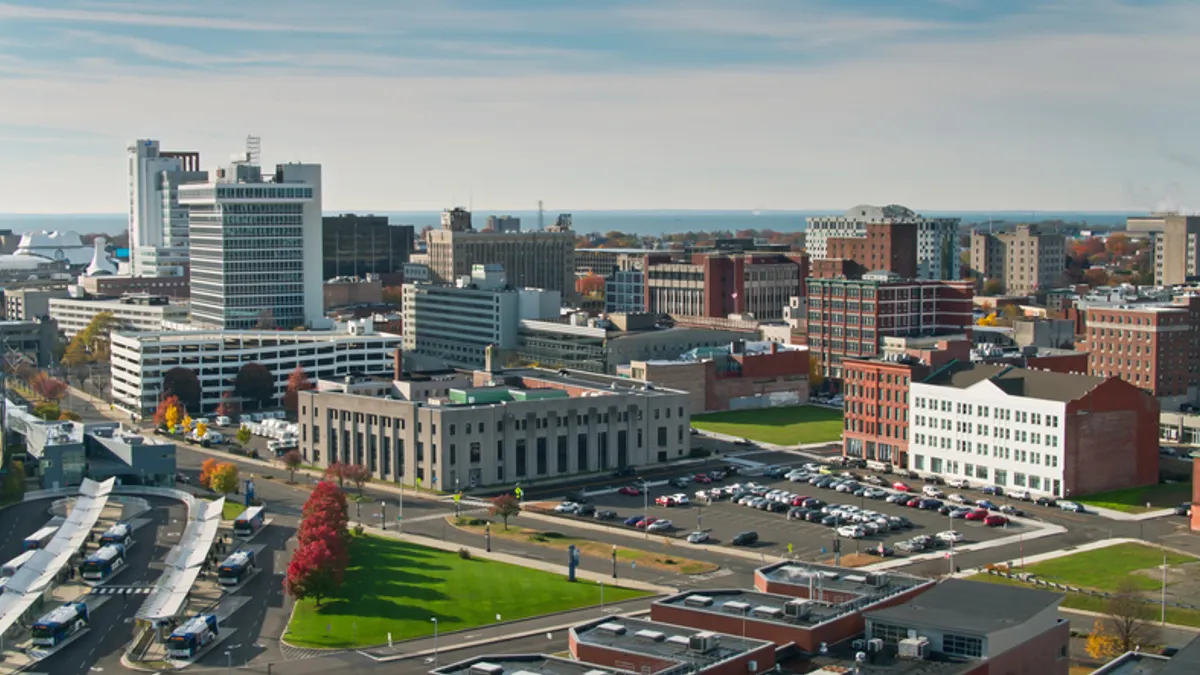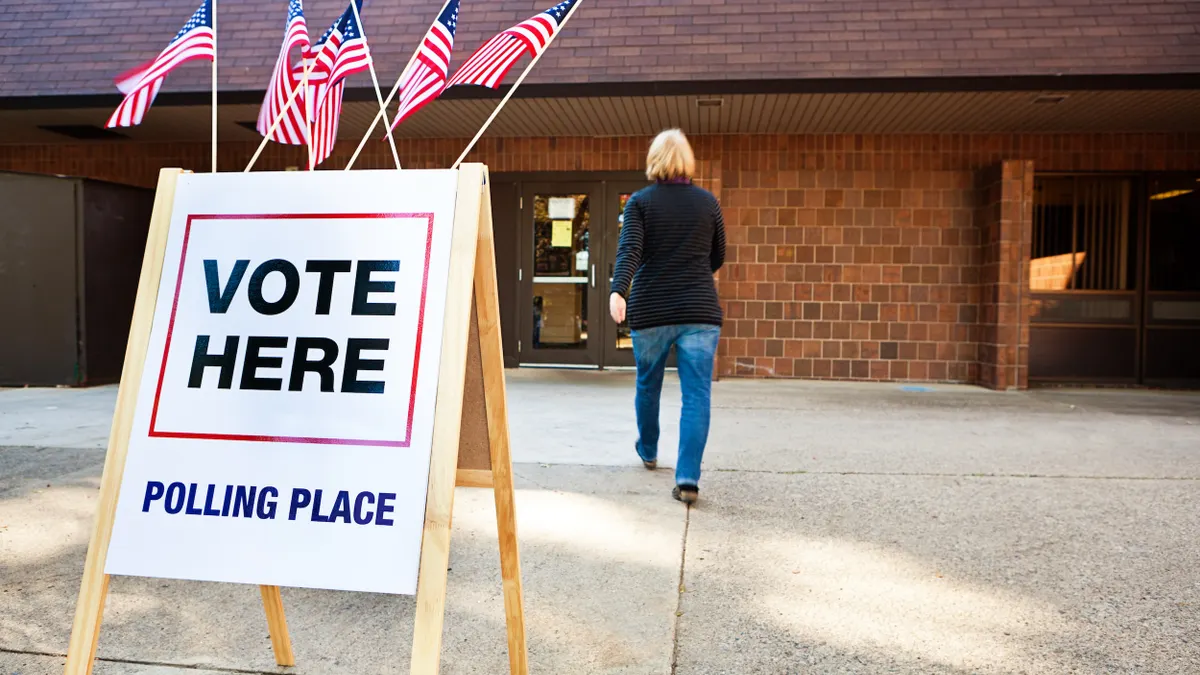Last September, Colorado broke new ground with the launch of the Colorado Smart Cities Alliance, the first of its kind in the United States.
The alliance brought together 12 cities that vary in size, from large ones like Denver (population estimated at just over 690,000), to smaller ones like Grand Junction (population estimated at just over 60,000). It partnered those cities with academic institutions like the University of Colorado system, private companies like technology firm Arrow Electronics and other research partners like the Colorado Innovation Corridor and the Colorado Technology Association.
At its launch, the alliance said it hoped to make Colorado "a leader in the development of intelligent, 21st century infrastructure, improving everything from transportation and housing to public safety and the environment for the state’s 5.5-plus million residents."
Helping coordinate the alliance is co-founder Jake Rishavy, vice president of innovation at the Denver South Economic Development Partnership, a nonprofit public-private partnership that promotes improving the regional economy around Denver through innovation, civic involvement and business advocacy.
Smart Cities Dive sat down with Rishavy at the Smart Regions Congress in Washington, DC last week to discuss the alliance, how its work is relevant regardless of a city’s size and his advice for those in other states looking to set up similar bodies.
This interview has been edited for clarity and brevity.
SMART CITIES DIVE: Why did the Colorado Smart Cities Alliance launch?
JAKE RISHAVY: We had developed some capacity around identifying emerging technologies, and our board asked us to apply that expertise to smart cities. As we started developing our strategy around that regionally, we realized that transportation mobility and public safety and things like that don’t respect jurisdictional boundaries. There were a number of issues that required us to share best practices and integrate technologies with neighboring communities. Really, when you take that to its logical extreme, the logical way to tackle issues is complex. Our thought was to pull together a collaborative, multi-jurisdictional, multi-segment collaboration including those academic partners and private sector partners. Trying to do it in microcosm in one city is great, and it’s a start, but in order to have true impact we really believed it had to be done at a regional level, requiring those multi-jurisdictions and multi-segment partners.
It’s an interesting typography in terms of the cities involved, from large cities like Denver to smaller ones. How did you get buy-in from all the jurisdictions?
RISHAVY: When we announced this, we were so pleasantly surprised. There’s such a hunger for civic innovation right now, and what we’re finding is that there are passionate innovation leaders within all these cities of all sizes. What they were looking for was the opportunity to be engaged. When we announced our intention to form the group, the initial founding 12 cities all reached out to us and asked us to join.
How do you go about making the lessons you learn in, say, Denver, relevant to these smaller communities? They have their similarities, but also their differences.
RISHAVY: Part of it is, it’s not so simple as gathering best practices and sharing the best practices that have been documented between jurisdictions. Because if it was left at that, a lot of it would not be applicable. A lot of it is about building relationships, building an ecosystem among the peers in those cities. That really didn’t exist in Colorado prior to our forming the alliance. There were great organizations like the Denver Regional Council of Governments, but they weren’t really focused on these issues in the context of smart cities. There are other great organizations like the Colorado Municipal League and the Colorado Metro Mayors Caucus, which are also collaborations among multiple jurisdictions, but not with a focus on smart cities.
When you start looking at these problems like public health or affordable housing or transportation and mobility in that smart cities context, no one had really created the platform or the network to bring together comparable peers among these multiple jurisdictions. Once we started to provide that platform, they inherently gravitate toward each other because they all have new information that others have been seeking. In the spirit of, "We’re all going to advance faster together than we would have individually," that’s a powerful motivating factor.
Denver has various ideas in the pipeline: its proposed hyperloop technology, a planned smart technology transportation framework, driverless shuttle tests and more. How do you go about taking things like that, which are major advances, relevant to other communities and making sure it’s not just one city out on its own?
RISHAVY: Hyperloop is a unique beast, because basically what we’re talking about so far is pilots and short trips. For the system to work in its full capacity, it will touch many small communities. There is a direct relevance there for those small communities. But I would argue that if you take even some of the more pedestrian — no pun intended — applications in smart cities like smart parking, that’s a major concern or a major pain point for a city like Denver and isn’t in Grand Junction and likely isn’t in a mountain town like Aspen. However, many of these issues are surprisingly relevant no matter what. It’s a different flavor on each of these problems, but I would argue that of the 10 or so very common problems that these cities are trying to tackle, of our 15 members, more than half of them have identified those as top priorities. There’s a lot of commonality between those cities, even if they vary substantially in size.
Why is that, do you think?
RISHAVY: Because humans are humans, human behavior is human behavior. Obviously, there are differences in the way people interact with government and the way that government serves people and the way communities serve people. But at the end of the day, the same basic human needs drive the elements that we would measure and then use to define quality of life. So, is your housing affordable in comparison to your income? Do you have the ability to move goods and services and people around get what you need to live your life and enjoy your life? Those are core human values, and I think those are going to be experienced whether you’re in Hong Kong, Singapore, New York or Denver or Grand Junction or Fort Collins.
"Obviously, there are differences in the way people interact with government and the way that government serves people and the way communities serve people. But at the end of the day, the same basic human needs drive the elements that we would measure and then use to define quality of life."

What does the immediate future look like for this organization? What will you be focusing your attention on?
RISHAVY: The next three to six months is this deep-dive discovery process. With each of those city members we’ve taken a first cut: we’ve identified in-progress projects under that smart cities banner, we’ve identified wish-list projects — city projects that cities would like to see happen — but at a pretty high level. What we’re doing now is going back to that list of roughly 50 projects that either live or wish-listed and identifying them down to the level of requirements gathering so we can essentially hand a document to an IoT solutions architect and say, "This is what this city is looking for. What is the appropriate and optimal technology stack that needs to be assembled to solve this problem or challenge?"
That’s all on the deployment side. The second piece of that is our policy and standards. We have no desire to be a standards-making body. We think groups like IEEE and NIST are the logical ones to develop those standards, however, we do see that it’s within our scope and what our communities are asking us for policy guidance. Not only on specific issues, developments or trends like autonomy, but also on just general innovation structure. When you look at the current structure of a city and processes that are in place like procurement and legal and others, there must be both the political cover and the process in place for those cities to be able to iterate and experiment thoughtfully within the confines of those systems. To do that, we’re working with our cities to develop things like innovation frameworks generally, innovation budgets generally. We think those things combined with the aggregate insights that we’re gaining from the pilots on what’s working and what’s not is a pretty powerful thing.
You guys are the first in the country to do something like this. What advice would you have for other states who look at an alliance of smart cities and want to do something similar?
RISHAVY: Start very clearly with the problems in mind. At the core of it, what’s motivated all our partners, whether it’s our city members, our private-sector partners, our university systems, it all revolves around identifying the problems that need to be solved and identifying who’s experiencing those pain points. For the private sector, it’s a pretty obvious reason why you would do that. Armed with that information, our private sector partners can create a solution and co-development opportunities with our cities, who are acting as a test bed or offering proof of concept opportunities. They’re going to go and sell that solution a thousand times to cities around the world. That’s very straightforward.
But similarly, with our academic partners like the University of Colorado system, when they understand the problems that cities are facing, that has serious implications for where they should be allocating resources within the university system to prepare students to come out and tackle those problems. That’s part of their interest in participating in this: not just the ability to engage on live projects with our cities, which they are, but it’s also insight into where the market in smart cities and this very impactful trend are heading.
For the federal research labs, similarly, there is a wealth of innovation and intellectual property that resides within these federal labs. I think if you spoke with anyone at any of those institutions, they would say the commercialization of those innovations has been pretty disappointing. It’s hard. Technology transfer out of those institutions is a difficult process and that’s why few have cracked it yet. But we believe providing them the test beds to develop proof of concept outside the laboratory, when you get over the fence of the labs and deployed in the live environment in these cities, that’s where you’re going to develop a true proof of concept for commercial viability. All those things depend on solving a problem for a customer, and the customer in case are the cities and their constituents.




















